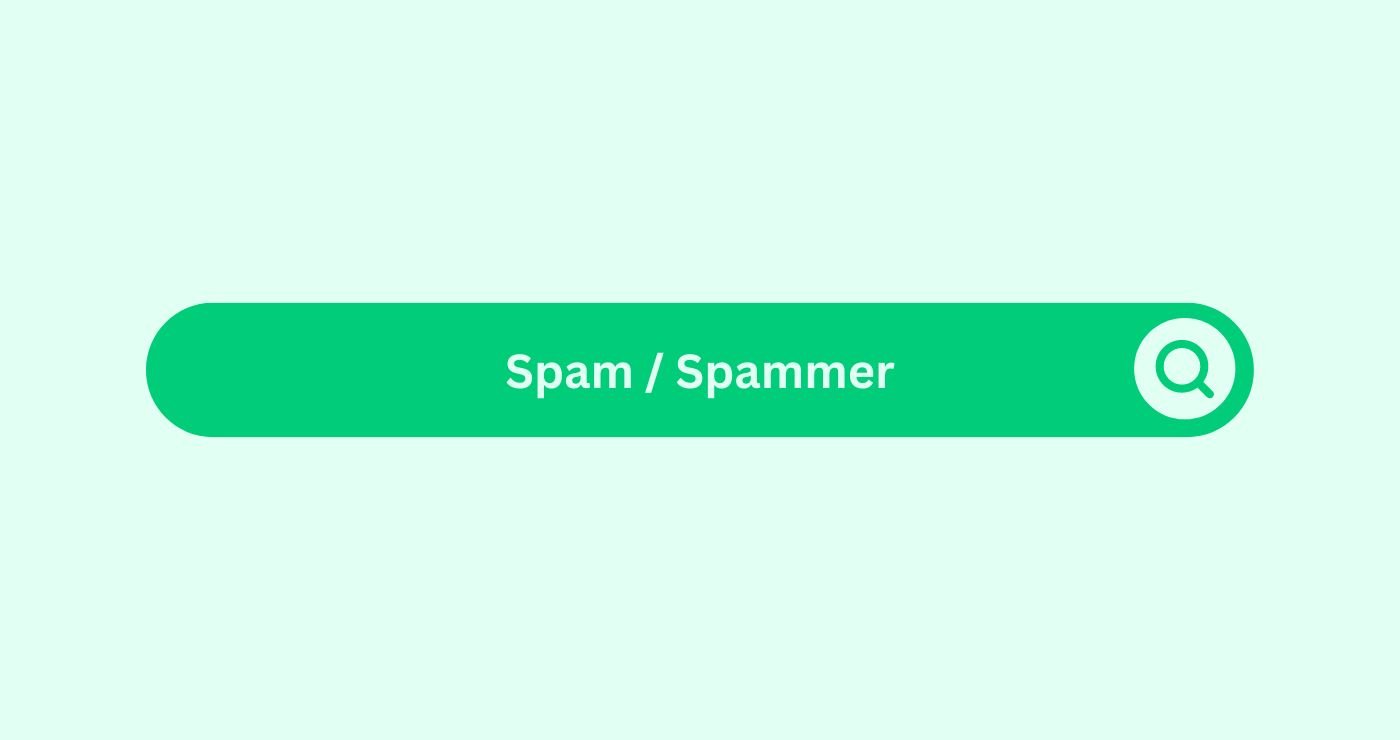Definition
Spam refers to unsolicited and often irrelevant or inappropriate messages sent over the internet, typically to a large number of users, for the purposes of advertising, phishing, spreading malware, or simply causing disruption. In the context of email marketingDefinition
E-mail marketing uses targeted messages t..., spam is any email that is sent to a recipientDefinition In email marketing, the recipient refers to the i... without their consent. A spammer is an individual or entity that sends these unsolicited emails.
Email spam is a major issue in the world of digital marketing as it can leadDefinition A Lead in the context of SEO refers to a potentia... to significant negative consequences for both the sender and the recipientDefinition In email marketing, the recipient refers to the i.... For recipients, spam is a nuisance that clutters inboxes and can pose security risks. For senders, engaging in spamming can damage their reputation, leadDefinition A Lead in the context of SEO refers to a potentia... to blacklisting by Internet Service Providers (ISPs), and reduce email deliverabilityDefinition Email deliverability refers to the ability of an ... rates.
How you can use
Example:
Consider a company that collects email addresses without proper consent, such as buying email lists from third-party vendors. They start sending promotional emailsDefinition Promotional emails are a cornerstone of email mar... to these addresses, hoping to increase their customer base. However, many recipients mark these emails as spam because they did not opt-in to receive them. As a result, ISPs flag the company’s email domain, sending their future emails to the spam folderDefinition When it comes to email marketing, the spam folder... or blocking them entirely.
To avoid being labeled as a spammer, the company should adopt the following best practices:
- Use Permission-Based Marketing: Ensure that every email recipientDefinition In email marketing, the recipient refers to the i... has explicitly opted-in to receive emails from you. This can be done through a clear sign-up form on your website.
- Provide Value: Send relevant and valuable content that your subscribersDefinition In the context of SEO, subscribers refer to indiv... are interested in. This reduces the likelihood of them marking your emails as spam.
- Respect Unsubscribes: Make it easy for recipients to unsubscribe from your emails and promptly honor these requests.
- Monitor EngagementDefinition Engagement in content marketing refers to the deg...: Keep track of email engagementDefinition Engagement in content marketing refers to the deg... metricsWhat are Metrics in the context of SEO? Metrics in SEO refer... such as open rates and click-through rates. Remove inactive subscribersDefinition In the context of SEO, subscribers refer to indiv... to maintain a healthy email listDefinition By forwarding the email, you ensure that your tea....
- Comply with Regulations: Adhere to email marketingDefinition
E-mail marketing uses targeted messages t... regulations such as the CAN-SPAMDefinition The CAN-SPAM Act, short for "Controlling the Assa... Act in the United States, which requires clear identification of the sender, a valid physical addressDefinition In email marketing, including a physical address,..., and a simple opt-out mechanism.
Key Takeaways
- Obtain Consent: Always ensure that you have explicit permission from recipients before sending them emails.
- Send Relevant Content: Tailor your emails to match the interests and preferences of your subscribersDefinition In the context of SEO, subscribers refer to indiv....
- Easy Unsubscribe: Provide a clear and simple way for recipients to unsubscribe from your emails.
- Monitor and Clean Your List: Regularly check engagementDefinition Engagement in content marketing refers to the deg... metricsWhat are Metrics in the context of SEO? Metrics in SEO refer... and remove inactive or unengaged subscribersDefinition In the context of SEO, subscribers refer to indiv....
- Follow the legal guidelines: Ensure compliance with email marketingDefinition
E-mail marketing uses targeted messages t... laws and regulations to avoid penalties and maintain a good sender reputationDefinition Sender Reputation in Email Marketing is a score t....
FAQs
What is spam in email marketing?
Spam in email marketingDefinition
E-mail marketing uses targeted messages t... refers to unsolicited and often irrelevant emails sent to a large number of recipients without their consent.
Who is a spammer?
A spammer is an individual or entity that sends unsolicited emails to recipients who have not opted-in to receive them.
How can I avoid being labeled as a spammer?
Obtain explicit consent from recipients, send relevant content, respect unsubscribe requests, monitor engagementDefinition Engagement in content marketing refers to the deg..., and comply with email marketingDefinition
E-mail marketing uses targeted messages t... regulations.
What are the consequences of being a spammer?
Consequences include damage to your sender reputationDefinition Sender Reputation in Email Marketing is a score t..., blacklisting by ISPs, reduced email deliverabilityDefinition Email deliverability refers to the ability of an ..., and potential legal penalties.
What is permission-based marketing?
Permission-based marketing involves sending emails only to recipients who have explicitly opted-in to receive them.
Why is it important to monitor email engagement metrics?
Monitoring metricsWhat are Metrics in the context of SEO? Metrics in SEO refer... helps identify inactive subscribersDefinition In the context of SEO, subscribers refer to indiv..., reduce spam complaints, and maintain a healthy email listDefinition By forwarding the email, you ensure that your tea....
How can I make it easy for recipients to unsubscribe?
Include a clear and simple unsubscribe linkDefinition Including an unsubscribe link in marketing emails... in every email you send, and promptly honor all unsubscribe requests.
What is the CAN-SPAM Act?
The CAN-SPAMDefinition The CAN-SPAM Act, short for "Controlling the Assa... Act is a U.S. law that sets rules for commercial emails, including requirements for unsubscribe mechanisms and accurate sender information.
Can purchased email lists lead to spam complaints?
Yes, purchased lists often contain email addresses of people who did not opt-in, leading to higher spam complaints and deliverability issues.
How can sending relevant content reduce spam complaints?
Email recipients are more likely to find and value relevant content, which lowers the chance that they will flag your messages as spam.




